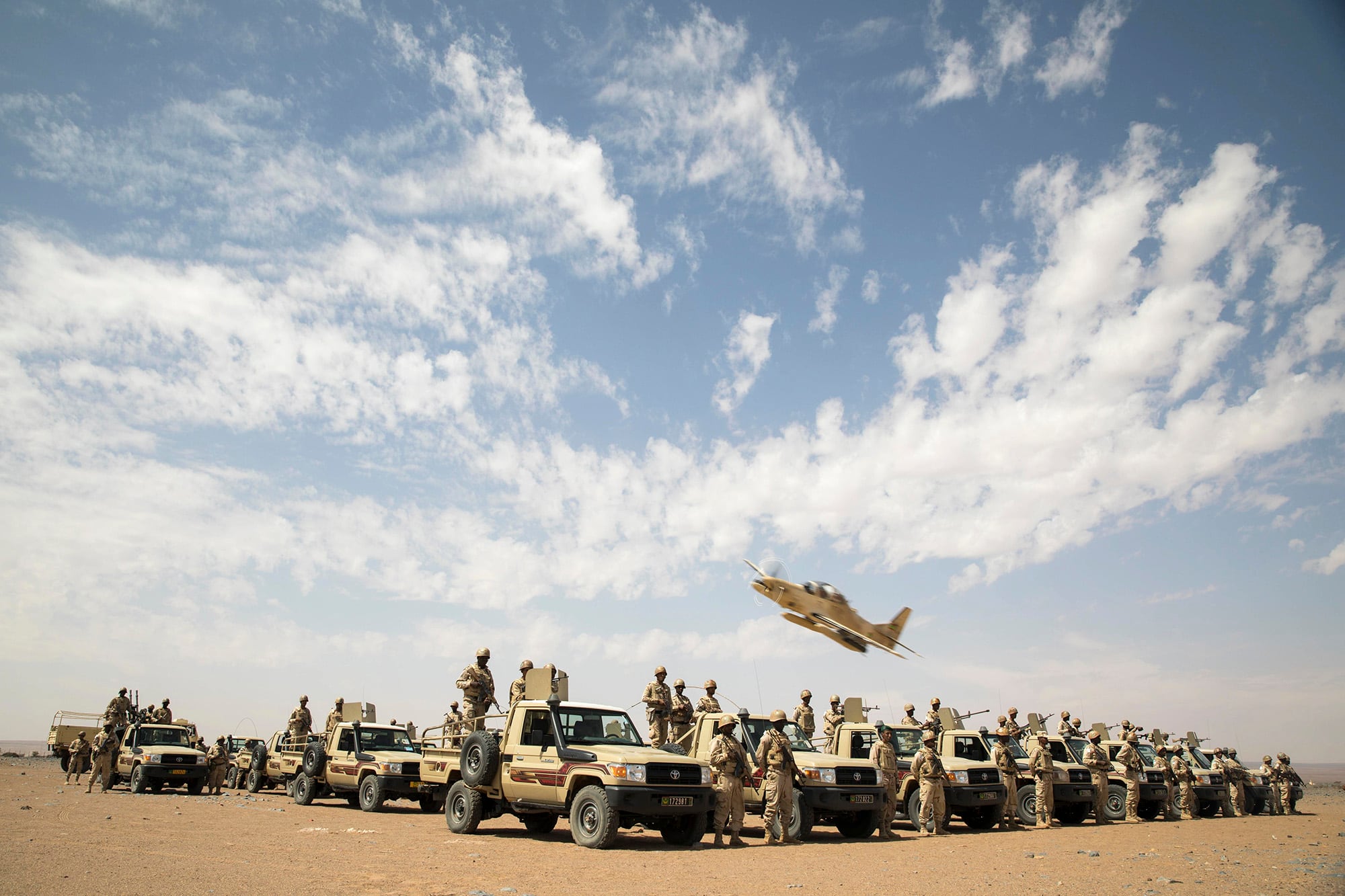Much has been asked of our special operations forces over the past two decades, with constant deployments and multiple combat tours the norm. One thing that shouldn’t be asked of them is that they go into combat without the most effective armed overwatch capability available.
To that end, U.S. Special Operations Command is nearing a decision to field a significant upgrade for its deployed forces via the Armed Overwatch program. The goal of that program is to provide SOF with a dedicated air platform capable of conducting close-air support, precision strike and advanced intelligence, surveillance, and reconnaissance (ISR) missions.
The aircraft that is ultimately selected should be as highly specialized and uniquely capable as the operators it is watching over. Yet the options being discussed as contenders for the program include manned aircraft, with limited range and endurance that are sub-optimized for the mission.
It doesn’t have to be that way.
The MQ-9 Reaper — a name that strikes fear into the hearts of America’s enemies because it is always there, always watching, and always ready — has been the armed overwatch platform of choice in every challenge it has faced: Afghanistan. Iraq. Syria, Libya, and other areas of armed conflict. Commanders using MQ-9s in Libya reported that 70 percent of Reaper strikes were “danger-close” CAS missions requiring precise targeting and limited collateral damage for shots as close as 25 meters to friendly forces.
The MQ-9 is tailor-made for SOCOM’s Armed Overwatch role. With nearly 7 million hours in operation, most of them in combat supporting U.S. and allied forces around the world, the aircraft proved themselves long ago. Their utility and reliability grows with each new upgrade and modification, ensuring they’ll continue to be lethal and relevant for many years more.
The MQ-9 is a well-established, existing line of aircraft. That means no need for a costly, complex new program aimed at developing a separate, less capable Armed Overwatch aircraft that must rely on aerial refueling and a bit of luck to guarantee success.
Because it is a remotely piloted aircraft, moreover, there’s no need to risk crewmembers by putting them in harm’s way above operations that can shift from low-intensity to high-intensity in an instant.
Special operations forces working with partners on the ground need dedicated support from above: Eyes helping them see what’s over the ridge or around the corner; connectivity so they can remain in touch; and the ability to quickly and precisely place ordnance on target. They need endurance, and they need reliability. The MQ-9 delivers time and again.
Adding more MQ-9s to the SOCOM arsenal isn’t just good for the operators on the ground, but for the U.S. military as a whole, which suffers in every combat theater from a lack of necessary ISR assets. Medium-altitude, long-endurance aircraft such as the MQ-9 can integrate into broader battle networks and return full-motion video, sensor data and other insights to higher headquarters or other units instantly, while simultaneously providing tactical overwatch — and, if necessary, kinetic effects — to troops in action. It is, by very definition, a force multiplier.
Effective armed overwatch will not only continue to be critical to the democratic world’s fight against extremist groups, it will also be a key instrument for operations in the “gray zones” of great power competition. Here again, the persistence and capabilities of the MQ-9 make it ideally suited for this mission.
The MQ-9′s versatility, moreover, enables it to be quickly integrated into a broader battle network to support air, naval or conventional ground forces, providing additional options for our combatant commanders.
Remote operations also give combatant commanders great flexibility in terms of how they both employ and deploy these aircraft. An MQ-9 pilot and sensor operator can be located anywhere in the world, meaning that scheduled shift changes provide fresh crews regularly over multi-hour missions. Rotating aircraft into and out of position means that our special operators can have literally nonstop overwatch. And the remote nature of these operations means specialized expertise can be dropped into any Reaper cockpit at a moment’s notice.
Geographic dispersal of aircrews results in fewer deployments out of the United States and into an area of responsibility. Plus, new levels of automation and artificial intelligence make the aircraft simpler to operate than ever from a broader number of austere airfields. The result is fewer forward operating bases, simplified logistics, less risk and lower costs — but better capability and higher-quality effects for the SOF teams counting on them for survival.
Because the MQ-9 flies at medium altitude, it operates above the range limits of man-portable surface-to-air missiles. MQ-9s can also be equipped with the same kinds of chaff and flare decoys as a fourth generation combat aircraft, making the aircraft even more survivable.
RELATED

If greater fire power is required for troops in contact, the weapon of choice after the MQ-9 should be a bomber, with its payload and endurance, not a vulnerable, limited-capacity, manned close-air support aircraft.
There are ample reasons why the MQ-9 has been the armed ISR platform of choice for our combat commanders during the past two decades of conflict. It should be the only option for SOCOM’s Armed Overwatch program.
Dr. Michael Vickers, a former Army Special Forces officer and CIA operations officer, was under secretary of defense for intelligence from 2011 to 2015 and assistant secretary of defense for special operations, low-intensity conflict and interdependent capabilities from 2007 to 2011. He is a member of General Atomics Advisory Board. General Atomics is the manufacturer of the MQ-9 Reaper.
Editor’s note: This is an op-ed and as such, the opinions expressed are those of the author. If you would like to respond, or have an editorial of your own you would like to submit, please contact Military Times managing editor Howard Altman, haltman@militarytimes.com.




